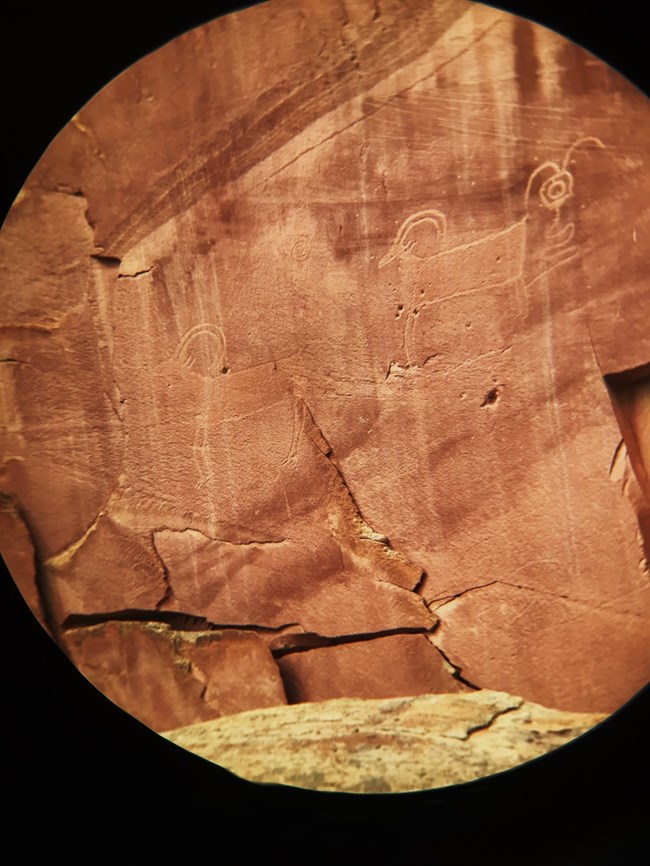
NPS/ Shauna Cotrell The Fremont Culture petroglyphs along Utah State Route 24 are accessible by two wooden boardwalks. Depending on the time of day and which panel you view, some of the petroglyphs might be harder to see. Bring a pair of binoculars to get a closer view, and usually the longer you spend looking, the more petroglyphs you will notice. The shorter boardwalk provides views of large, anthropomorphic (human-like) petroglyphs, as well as bighorn sheep petroglyphs, and other animals and geometric designs. The longer boardwalk parallels the cliffs, and the petroglyphs along it are closer to the viewer, but harder to see because of a patina that has developed over them. All archeological sites, including the petroglyphs off Utah Highway 24, are protected. The Archaeological Resources Protection Act of 1979 (ARPA) states that all acts of vandalism are illegal and are punishable by up to 1 year in prison and/or a $20,000 fine. Anyone with information concerning vandalism within Capitol Reef National Park should immediately contact the National Park Service. Report all crimes or suspicious activity to the Visitor Center or a National Park Service employee, or call the Capitol Reef tip line at (435) 425-4134. 
NPS/ Ann Huston
Unable to visit in person? Check out the wayside panels for the petroglyphs: Signs of a Thriving People Stories in Stone If Cliffs Could Speak |
Last updated: December 31, 2020
